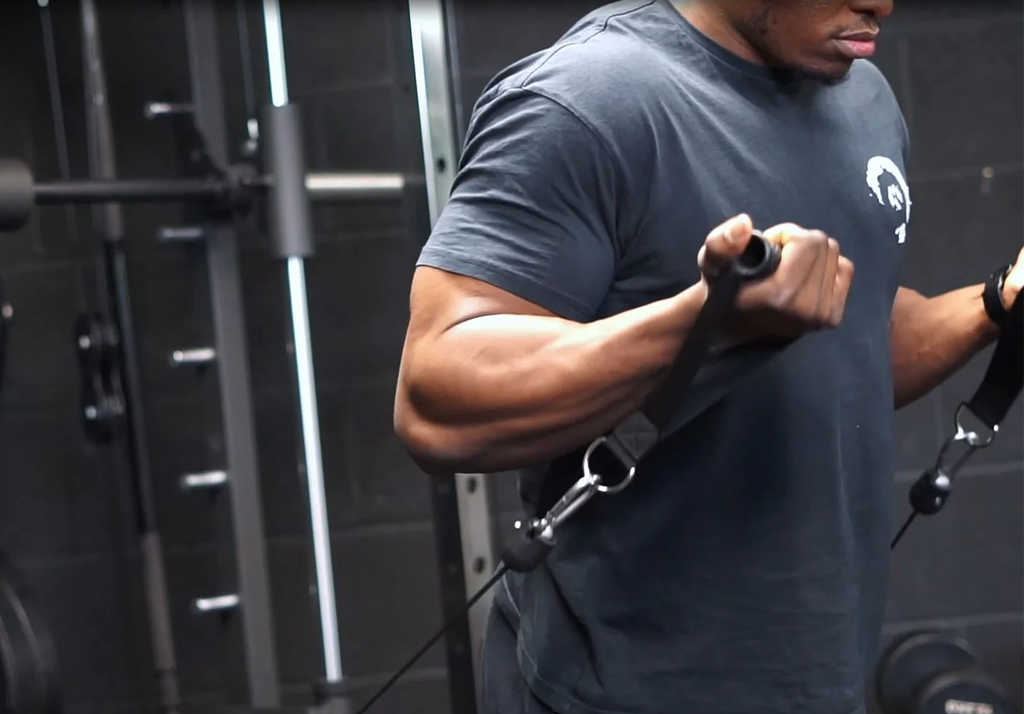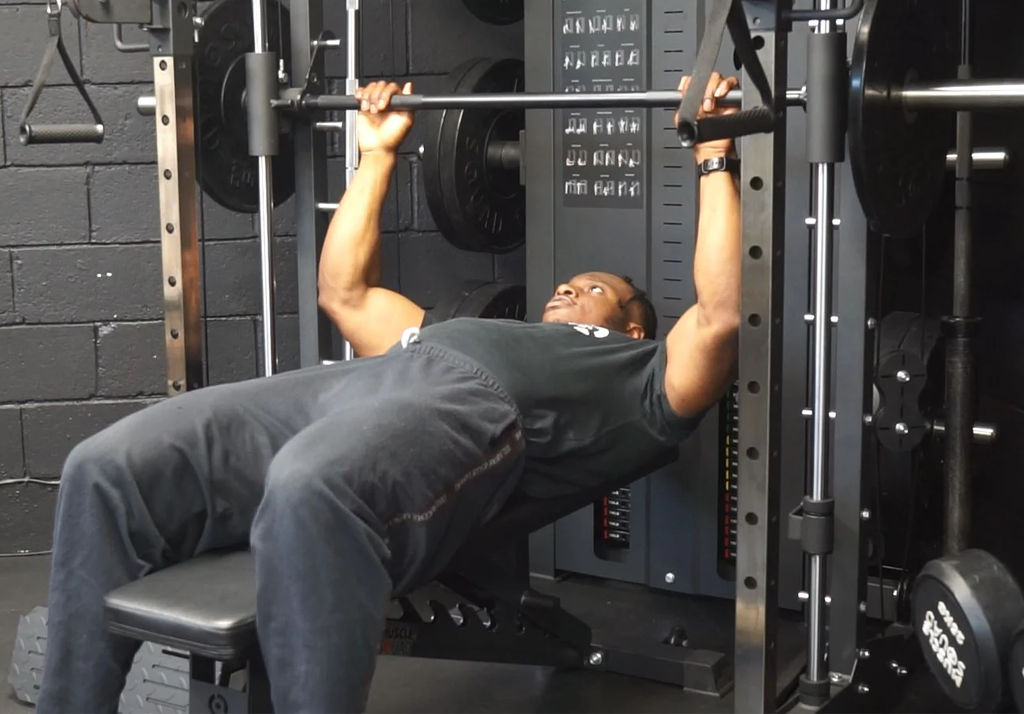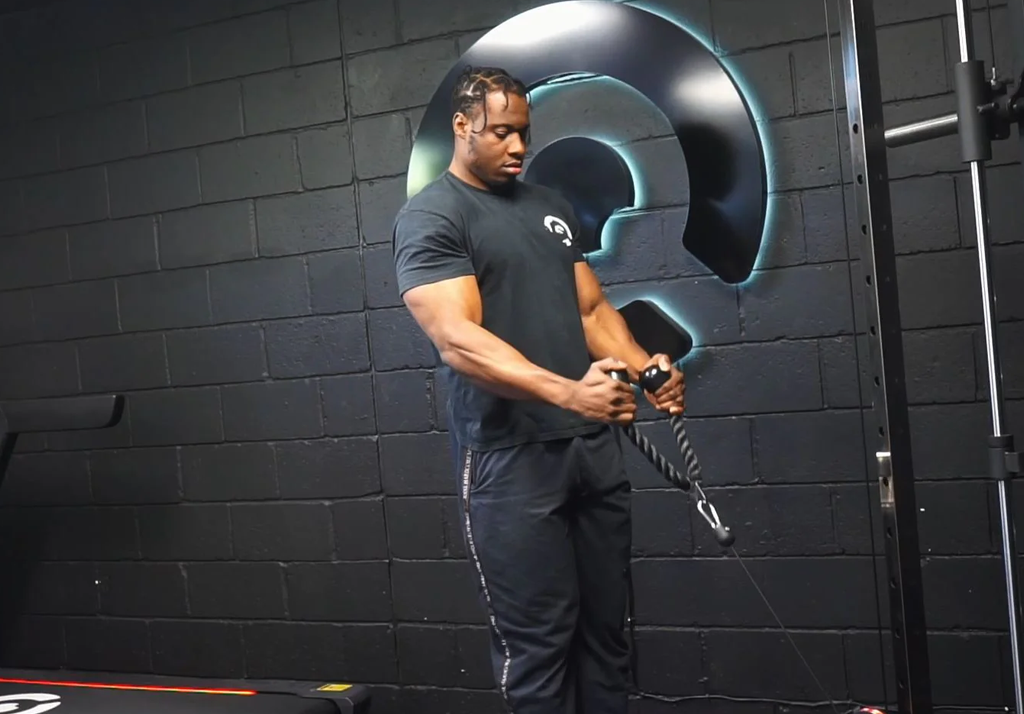The cable curl is a bicep curl variation where you attach a handle or a pair of handles to a cable machine and draw your hands towards your upper torso, all while maintaining a flex in your elbow. Since this is a cable movement that supports an extended time under tension compared to dumbbells, it can isolate the bicep more effectively — but does employ less stabilisation as a result. In this brief how-to guide we’ve broken down how to perform a cable bicep curl with proper form, which muscles it activates and what the pros and cons are of this movement are.
Performing a bicep cable curl with perfect form
Muscles worked in the cable curl
The cable bicep curl is an isolation exercise that works on, you guessed it, the bicep. More specifically, though, this variation emphasises the stretch and lengthened aspect of the movement which is important for overall bicep development.
We’ve chosen to showcase a turn-away cable curl in our video, which has the benefit of pulling the cables from behind you and thus increasing time under tension, but you can perform this exercise facing the machine or with the handles by your side. It’s yours to customise.
Cable curls vs dumbbell curls
The turn-away variant of a cable curl use the same grip (supinated) as the traditional dumbbell bicep curl but does have a few key differences.
Cable curls
Cable curls are an isolation movement for your biceps. By opting for a turn-away stance like we’ve demonstrated above, you increase the muscle’s time under tension compared to a traditional curl, which is great for supporting muscle growth. However, since cables aren't at the mercy of gravity like dumbbells are, it's important to line the handles up with your arm path to fully stretch in the movement.
Dumbbell curls
The classic dumbbell curl is possibly the most iconic gym movement there is, but what exactly are its benefits? Well, most people have the potential to lift heavier with a dumbbell than they do with cables, which supports hypertrophy. But on the other side of that coin, it’s easier to ‘cheat’ in a dumbbell exercise since there’s nothing stopping you—besides your own discipline—from helping the dumbbell up with your own momentum. This can lead to ego lifting which isn’t a smart way to train.
There’s a place for both exercises, in our eyes, and you’ll find the best results by trying a variety of different curls and seeing which feel best for you.

 Jul 10, 2024 - Cameron Brierley
Jul 10, 2024 - Cameron Brierley

